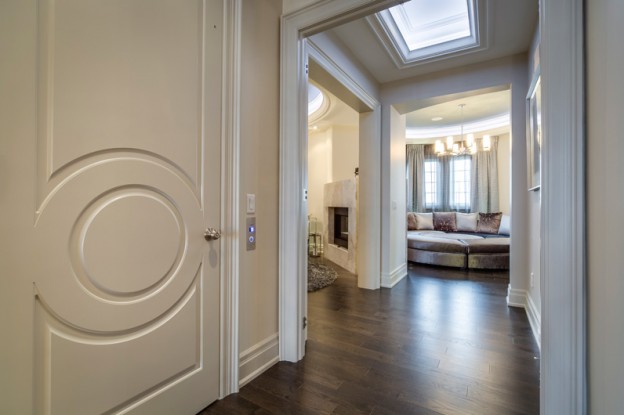Looking to immerse yourself in the world of interior doors?
Whether you’re buying custom interior wood doors in Toronto or simply wanting to learn more about interior doors, it’s easy to become overwhelmed by the many terms that are used by people across the door manufacturing industry.
Keep reading to learn more about the most common types of interior doors and the different industry lingo that is used!
Types of Custom Interior Doors
Custom interior flush doors
These doors are typically constructed from a single piece of wood—often possessing a solid wood core. While simple from a design perspective, the door’s sheer density can provide added soundproofing and insulation.
Custom interior panel doors
Unlike flush doors, custom interior panel doors are divided into raised or recessed sections of wood. These sections may run vertically or horizontally, adding detail to the door’s design.
Custom interior French doors
These swinging or sliding double doors are typically adorned with ornamental glass panels. Custom interior French doors allows light to shine through from one room to the next—making your home appear more open and spacious.
Functions of Interior Doors
Swinging doors
As you might expect, a swinging door functions by rotating inward or outward—depending on the room and application. This type of door is usually secured by hinges on one side of the door frame.
Sliding doors
Contrary to a swinging door, a sliding door rests on horizontal tracks at the top and bottom ends. This allows the door to open and close from one side.
Parts of Interior Doors
- Door slab: The door itself, sans the unit’s frame and moulding, is often referred to as the door “slab.”
- Door frame: The frame is the wood structure that lines the perimeter of the door on all four sides. It supports both the hinge and the door itself.
- Side Jambs: The side jambs are the vertical pieces of the door frame. One jamb attaches to the hinge and supports the door slab, while the other jamb attaches to the mullion and allows the door to open, close, and lock.
- Head Jamb: The head jamb is the horizontal section located at the top of the door frame.
- Sill: The sill is the horizontal section located at the bottom of the door frame.
- Casing: The terms “frame” and “casing” are sometimes conflated, but it’s important to distinguish between the two terms. The casing is not the frame itself but rather the decorative moulding that is added to the frame.
- Transom: There are two common types of decorative glass that are added to custom interior wood doors in Toronto. The glass located above the door is called the transom.
- Sidelight: The decorative glass that is located at the side of the interior door is called a sidelight.
- Door unit: The door, its frame, hardware, and the entire assembly is often referred to as the door “unit.”
Contact Traditional Door today for the best custom interior wood doors in Toronto. One of our design experts is ready to help bring your brand new custom doors to life! For more information or to receive a quote, contact us today! Submit a form online or give us a call at (416) 747-1992

